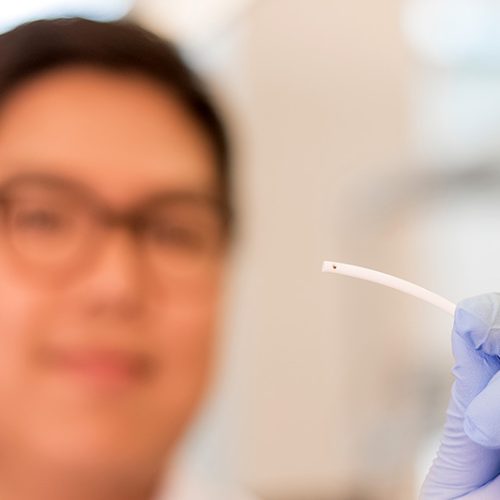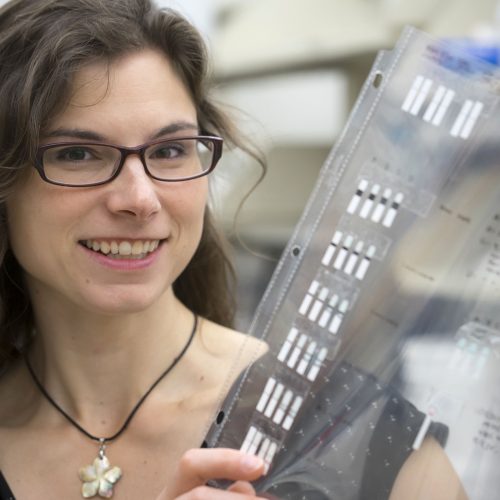
May 29, 2017
New technique could increase success rate, life span of implantable devices
WEST LAFAYETTE, Ind. — A new technique being developed at Purdue University could provide patients who require implantable catheters in the treatment of neurological and other disorders with a reliable and self-clearing catheter that could eliminate the need for additional surgery to replace failing devices.

